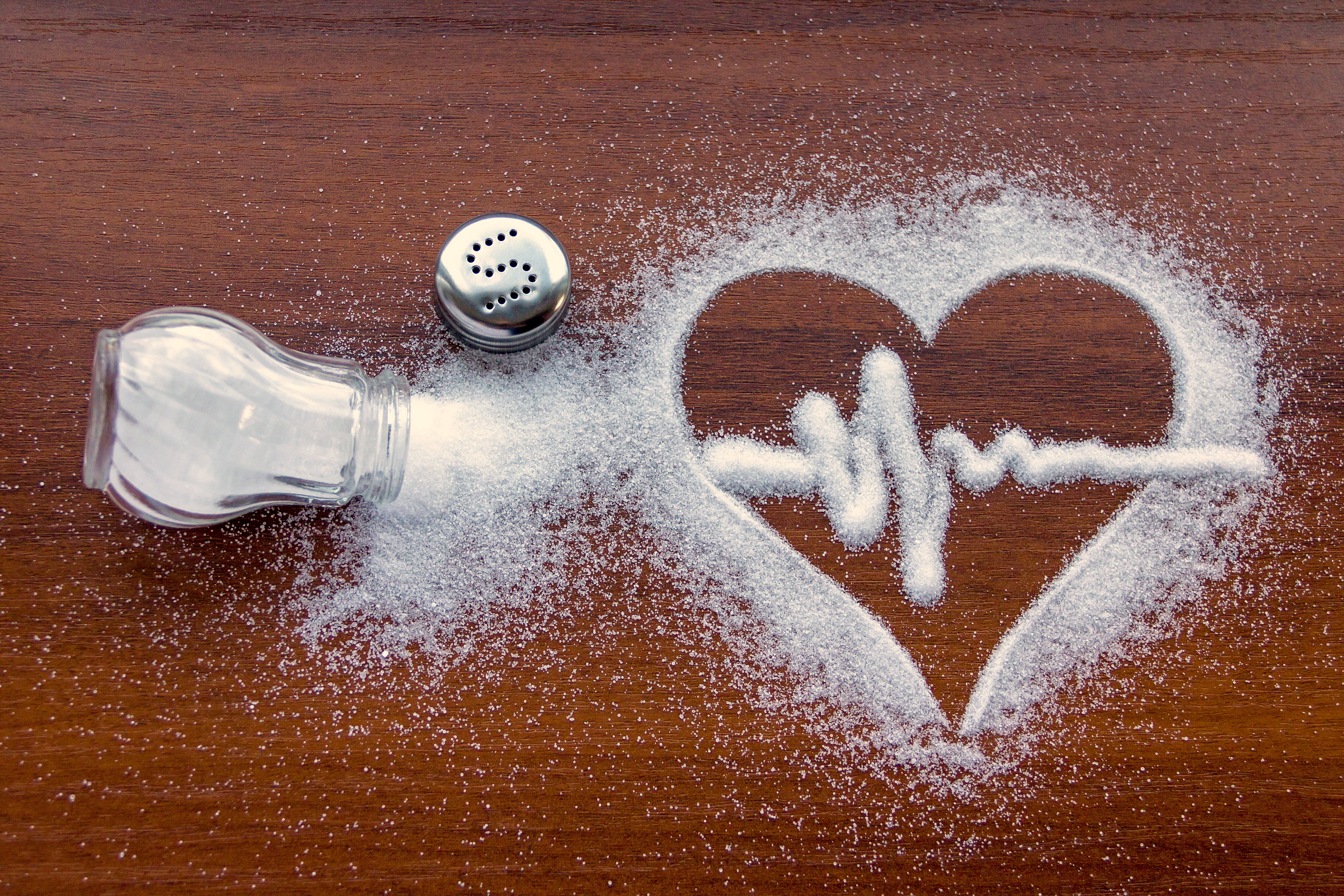Author
Reviewer
Share Article
Hypertension- A Salty Topic

| Author | Reviewer |
|
Narendra Singh, MD, FRCPC, FCCS, FACC, FAHA |
Milan Gupta, MD, FRCPC, FCCS, CPC(HC) |
Thiazide diuretics were discovered in the 1950s and the first clinical trial of hypertension treatment took place in the 1960s. Despite the widespread availability of generic antihypertensive drugs and dissemination of practice guidelines, hypertension continues to be a major cause of global morbidity and mortality. Hypertension is on the rise around the world in the presence of an aging population that consumes more salt, has gained more weight, become more sedentary and is increasingly stressed. One in four Canadians has hypertension and 90% will develop hypertension over their lifetime. During the COVID-19 pandemic, preventive healthcare took a back seat as access to health care was limited and has resulted in a significant decrease in rates of hypertension control and an increase and its complications.
Has the diagnosis and treatment of hypertension changed?
Guidelines and definitions have evolved over time. Currently if the office blood pressure measurement is over 140/90 or greater than 130/85 mm Hg from home monitoring on multiple readings then hypertension is diagnosed. Automated office BP monitors and ambulatory BP monitors are now preferred over manual readings. Initiation of pharmacological treatment is based on risk. High risk individuals such as those with diabetes, chronic kidney disease, age over 75 years or a 10-year global cardiovascular risk of greater than 15%, should start treatment if the systolic blood pressure is above 130 with a target of less than 120 mmHg. In low-risk individuals, hypertension should only be treated if the systolic blood pressure is greater than 160 with a target of less than 140 mm Hg. Five major classes of antihypertensive agents can be considered first line –thiazide-like diuretics, ACE inhibitors, angiotensin receptor blockers, long-acting calcium channel blockers, and beta-blockers. The choices should be based on compelling indications, patient preference, and side effect profile. An individualized approach often using combination therapy ideally as a single pill combination is likely to result in better outcomes and longer-term compliance. Low doses of multiple drugs tend to be better tolerated and are more effective than higher doses of single agents.
over 140/90 or greater than 130/85 mm Hg from home monitoring on multiple readings then hypertension is diagnosed. Automated office BP monitors and ambulatory BP monitors are now preferred over manual readings. Initiation of pharmacological treatment is based on risk. High risk individuals such as those with diabetes, chronic kidney disease, age over 75 years or a 10-year global cardiovascular risk of greater than 15%, should start treatment if the systolic blood pressure is above 130 with a target of less than 120 mmHg. In low-risk individuals, hypertension should only be treated if the systolic blood pressure is greater than 160 with a target of less than 140 mm Hg. Five major classes of antihypertensive agents can be considered first line –thiazide-like diuretics, ACE inhibitors, angiotensin receptor blockers, long-acting calcium channel blockers, and beta-blockers. The choices should be based on compelling indications, patient preference, and side effect profile. An individualized approach often using combination therapy ideally as a single pill combination is likely to result in better outcomes and longer-term compliance. Low doses of multiple drugs tend to be better tolerated and are more effective than higher doses of single agents.
Has the workup for hypertension changed?
 Hypertension has been dubbed the silent killer. Occasionally headaches and visual symptoms warn patients of hypertension but for the most part it is an asymptomatic condition. The basic workup should still include an assessment of the lipid profile, A1c, electrolytes, renal function, urinalysis, and electrocardiogram. Hypertension is a major risk factor for the development of stroke, coronary artery disease, peripheral vascular disease, congestive heart failure, cardiac arrhythmias, end-stage renal disease, blindness, osteoporosis, aneurysms, erectile dysfunction, and sudden death. Target organ damage manifested by these conditions should be evaluated in moderate and high-risk groups. A search for secondary causes of hypertension such as adrenal or renal disease, thyroid conditions or renovascular stenosis, should be considered if clinical suspicion is high or patients remain refractory to treatment (3 or more antihypertensive agents). Pregnancy testing should be considered in all women of reproductive age to avoid the use of ACEI/ARB’s. The use of aspirin in hypertensive patients is no longer recommended unless there is documented vascular disease.
Hypertension has been dubbed the silent killer. Occasionally headaches and visual symptoms warn patients of hypertension but for the most part it is an asymptomatic condition. The basic workup should still include an assessment of the lipid profile, A1c, electrolytes, renal function, urinalysis, and electrocardiogram. Hypertension is a major risk factor for the development of stroke, coronary artery disease, peripheral vascular disease, congestive heart failure, cardiac arrhythmias, end-stage renal disease, blindness, osteoporosis, aneurysms, erectile dysfunction, and sudden death. Target organ damage manifested by these conditions should be evaluated in moderate and high-risk groups. A search for secondary causes of hypertension such as adrenal or renal disease, thyroid conditions or renovascular stenosis, should be considered if clinical suspicion is high or patients remain refractory to treatment (3 or more antihypertensive agents). Pregnancy testing should be considered in all women of reproductive age to avoid the use of ACEI/ARB’s. The use of aspirin in hypertensive patients is no longer recommended unless there is documented vascular disease.
Are nonpharmacological measures of any real value when we have excellent drugs?
 Without a doubt, the development of multiple antihypertensive agents has had a profound effect on our ability to treat hypertension effectively. All medications however have side effects and adherence remains a challenge. It is always important for us to look at reasons for nonadherence and be innovative in the ways that we empower our patients to monitor their blood pressure and achieve their targets. Multiple electronic apps now exist and serve as a powerful adjunct to regular office visits. Exercise, weight loss, deep breathing exercises, stress reduction, improved mental health and better sleep all contribute to lower blood pressure. A recent study from China called SSaSS showed that using a simple salt substitute that was 75% sodium and 25% potassium resulted in a 14% lower risk of a stroke, 13% fewer myocardial infarctions and 12% lower chance of dying over a 5-year period. Adoption of salt substitutes could reduce 2 million heart attacks, strokes and death around the world annually, but it requires a concerted effort on the part of governments, salt manufacturers the food industry and consumers to make this change.
Without a doubt, the development of multiple antihypertensive agents has had a profound effect on our ability to treat hypertension effectively. All medications however have side effects and adherence remains a challenge. It is always important for us to look at reasons for nonadherence and be innovative in the ways that we empower our patients to monitor their blood pressure and achieve their targets. Multiple electronic apps now exist and serve as a powerful adjunct to regular office visits. Exercise, weight loss, deep breathing exercises, stress reduction, improved mental health and better sleep all contribute to lower blood pressure. A recent study from China called SSaSS showed that using a simple salt substitute that was 75% sodium and 25% potassium resulted in a 14% lower risk of a stroke, 13% fewer myocardial infarctions and 12% lower chance of dying over a 5-year period. Adoption of salt substitutes could reduce 2 million heart attacks, strokes and death around the world annually, but it requires a concerted effort on the part of governments, salt manufacturers the food industry and consumers to make this change.
Final thoughts?
It is estimated that 1.5 billion people will have hypertension by 2025. We are fortunate in Canada to have the tools and resources to effectively diagnose and treat what is really the most important pandemic facing us today. Let us act now.
Click the links below to read our other blogs:
![]() What are the updates to the clinical approach to dyslipidemia?
What are the updates to the clinical approach to dyslipidemia?
![]() What can natriuretic peptide testing tell me about my heart failure patients?
What can natriuretic peptide testing tell me about my heart failure patients?
![]() How has COVID-19 impacted Canadians with cardiovascular disease?
How has COVID-19 impacted Canadians with cardiovascular disease?
The development of this blog was overseen by the Canadian Collaborative Research Network. There was no outside funding provided for the development of this article.
copyright © 2025 CCRN
Any views expressed above are the author's own and do not necessarily reflect the views of CCRN.

